"The hand plane is the first part of the woodworker's aria." — James Krenov (2000)
In early September 1419, the Duke of Burgundy walked onto a bridge about 45 miles southeast of Paris, ready to finalize a truce in a bloody civil war he had instigated 12 years earlier.
John the Fearless, as the ruthless and cunning Duke was known, had no interest in submitting to his opponent, Prince Charles, heir to the French throne. Ever since Duke John set off the civil war by assassinating the Duke of Orleans in 1407, he had been fighting to control the city of Paris and France's royal family. He wasn't about to cede that power. But he and the prince had a common enemy: Henry V of England, who was busy conquering much of Northern France. And so the duke and the prince spent the summer of 1419 trying to negotiate a viable alliance. In September, they agreed to meet on a bridge over the river Yonne where Charles had built a small wooden palisade with room enough for the two leaders and 10 men from either side.
When Duke John and his entourage arrived at the bridge, the prince's men rushed them into the enclosure and locked the door. The two leaders approached each other. John took off his hat and knelt on one knee. Prince Charles took the duke's hand and pulled him to his feet. As John stood, the prince and his attendant "made a signal with their eyes" to a knight standing next to the duke. Suddenly, the knight raised his axe, and the prince's guards began shouting "Kill! Kill!"1
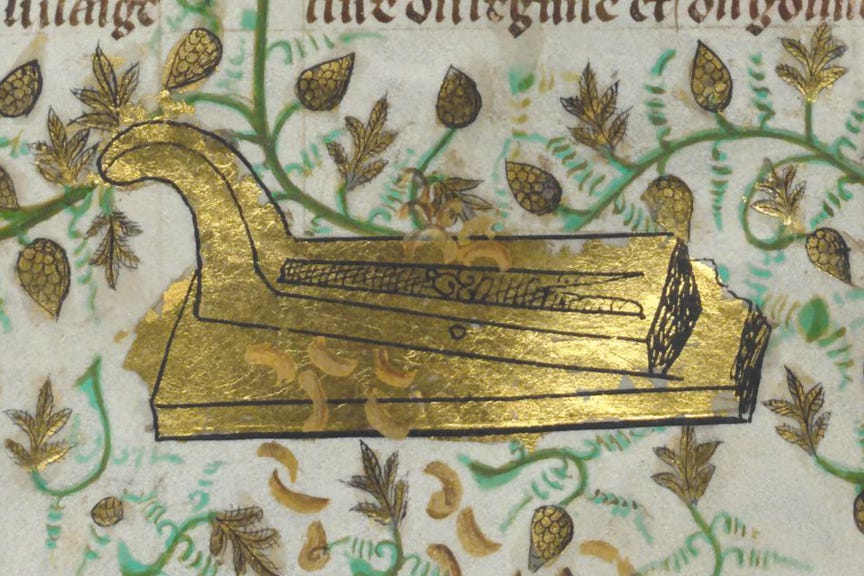
John the Fearless’s clothing and jewelry that day would have been covered with his personal emblems: the mason's level, the cross of St. Andrew, and most notably, the plane. The duke was fixated on the plane as a symbol of his leadership and ideology. He decorated armor, badges, jewelry, manuscripts, horse trappings, pennants, and banners with the emblem. In 1406, he gave 315 gold planes adorned with diamonds to his knights and lords. A few years later, 200 of his noblemen received gold planes, with another 300 silver planes going to his household servants. Between 1407 and 1411, he had at least 5,000 banners decorated with gold planes and shavings made for his army. Just as important were the countless badges worn by his supporters from all parts of society, each one displaying a plane.
The duke used the plane "in excessive profusion on every possible occasion," the historian Richard Vaughan writes. "All his contemporaries had their chosen emblems, but none broadcast them on the scale on which John the Fearless employed his plane."2
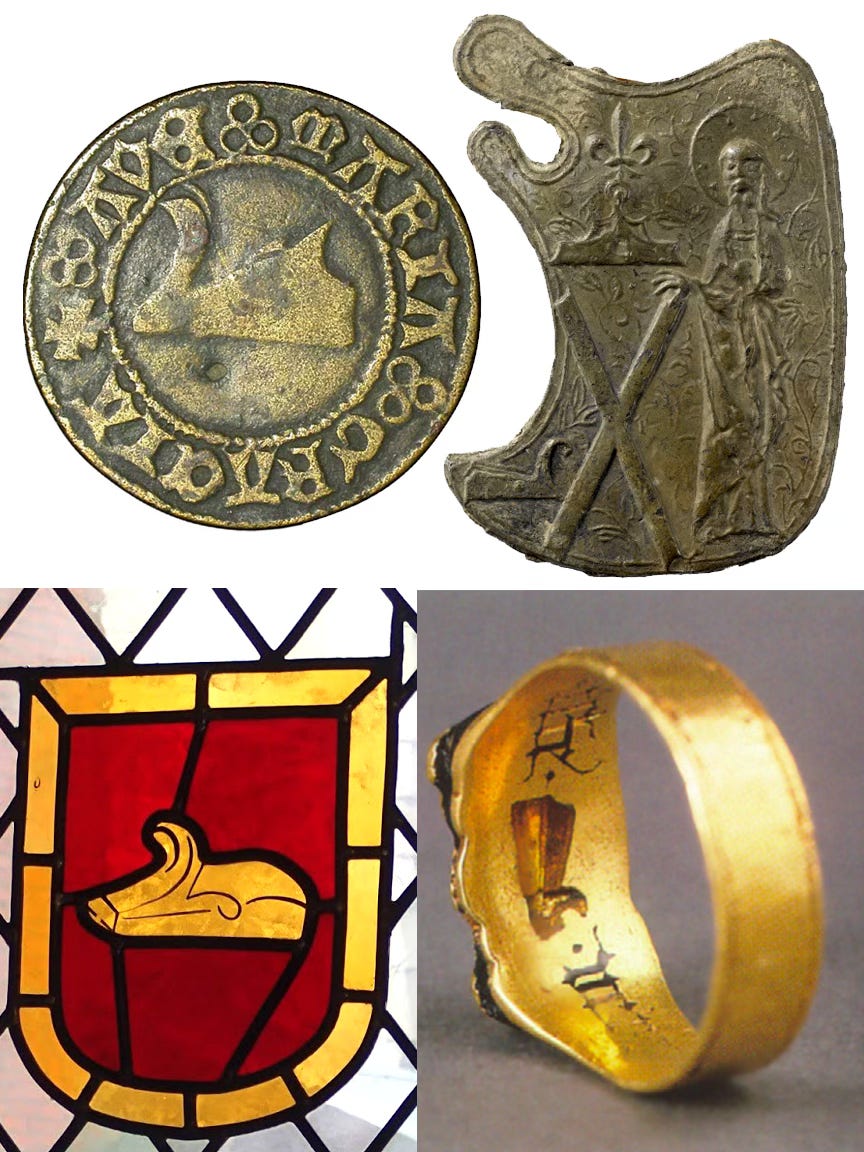
Historians have long thought the duke used the plane as a retort to the Duke of Orleans's emblem, a knotty cudgel, with the plane symbolically smoothing the club. Historian Emily Hutchison believes the plane was also part of a shrewd propaganda campaign. John the Fearless ruled by violent coercion. But he also presented himself as a reformer, a leader who would slice away corruption in the royal court. The plane became a symbol of allegiance that transcended social divisions. It also was a threat: wear and display this emblem or face brutal retribution. Throughout his reign, the duke portrayed his opponents as tearing down and destroying the country. Only his plane could rebuild France. The fact that it was intrinsic to carpentry, a key part of Christianity's origin story, made the emblem even more potent.3
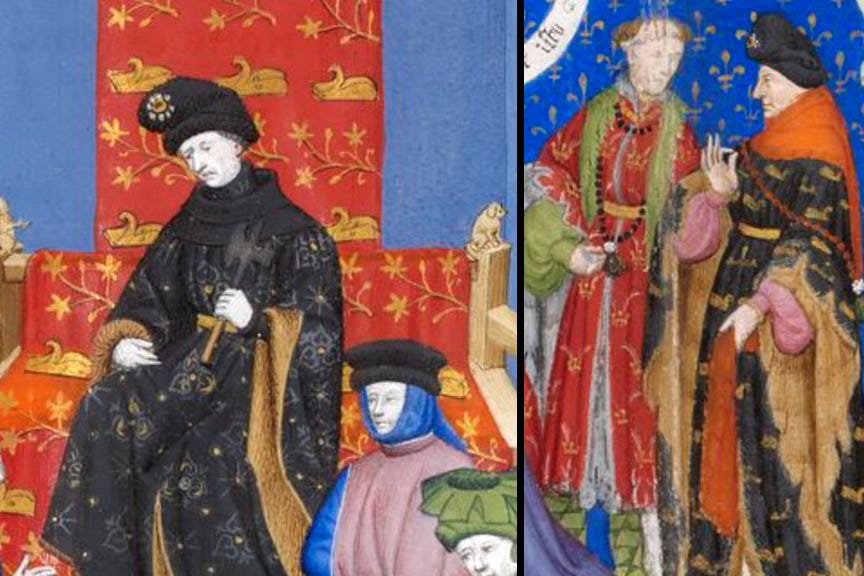
Walking onto the bridge that September day, John the Fearless had no idea the meeting was an ambush. While the duke's side of the palisade was locked, the opposite door was unlocked, with Prince Charles's soldiers lying in wait. As the cry of "Kill! Kill!" went up, the knight with the axe hacked at the duke's head. A guard slashed at the duke’s face with a sword, severing his upraised arm. Another blow from the knight's axe knocked him to the ground. The prince's soldiers rushed into the palisade and subdued the duke's men. The last thing they saw was a man standing over the duke's prostrate body, stabbing him with a sword. John the Fearless was dead, and with him died the plane as a French political symbol.

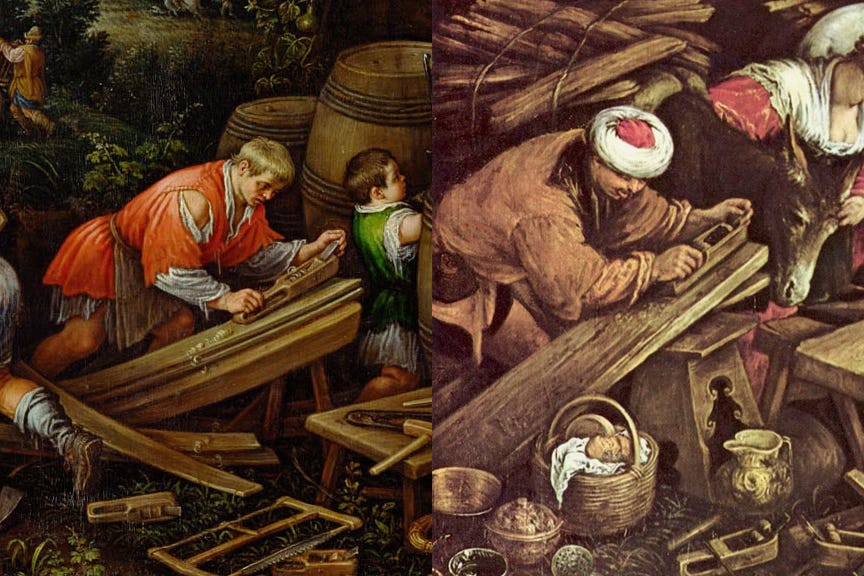
There is one supposed truism about how planes are used around the world: They're designed to be pushed, not pulled (with Japanese planes being the exception). But look at these two carpenters painted by members of the Bassano family in Northern Italy in the late 16th century. They're holding their Roman-style planes in a curious way. Are they starting to plane from the left, and will rotate their body as they push the plane down the workpiece with the left hand? Or are they pulling the plane with their right hand and guiding it with the left?
Our knowledge of planemaking in the Middle Ages is based almost entirely on artwork from that era. The Bassanos (who also used the surname dal Ponte) are known for their accurate portrayal of period hand tools. In 1999, Britain's Tool and Trades History Society published an analysis of the woodworking, coopering and blacksmith tools found in the family's paintings. The article came to the conclusion that the planes were indeed pulled. Was this a weird corner of Europe that developed its own planing style?4
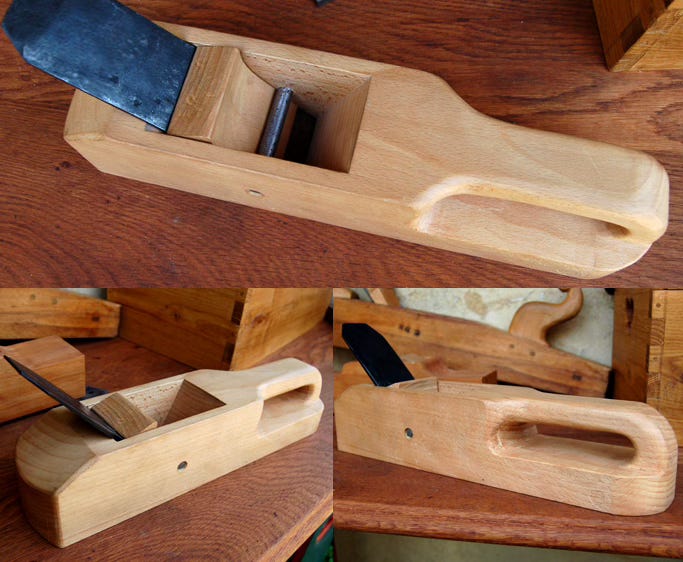
The artisans in the Dutch medieval reenactment group St. Thomas Guild were also intrigued by this type of plane. In 2011, they made a beautiful replica, 13 inches long, by 3 inches wide and 2.7 inches high. So, enough speculation, let's ask the people who have hands-on experience with these planes. Marijn, the group's guildmaster, agrees that the Bassano paintings are ambiguous. As it turns out, the answer to how the planes are used is: it depends. "I use it mostly on the push, but sometimes on the pull," he explains. According to Marijn, "These type of planes were still in use (and for sale) in the early 20th century (I have a picture of a sales catalogue with these 'Venetian planes'). They probably can still be found at Italian flea markets."
One more pull plane. A few years back, Vic Tesolin came up with his own version; plans are available at Fine Woodworking.
Whether you're planing on the push or pull, go out and make something!
— Abraham
Deposition of Jehan Sequinate, secretary to Duke John, 10 April 1421, as quoted in Vaughan, Richard. John the Fearless: The Growth of Burgundian Power. Barnes and Nobel, 1966.
Vaughan, 1966.
Hutchison, Emily J. "Partisan identity in the French civil war, 1405-1418: reconsidering the evidence on livery badges." Journal of Medieval History, vol. 33, 2007.
Wharf, Alan. "The Bassano Family - Renaissance Painters with an eye for Tools and Trades." Tools and Trades, vol. 11, June 1999.




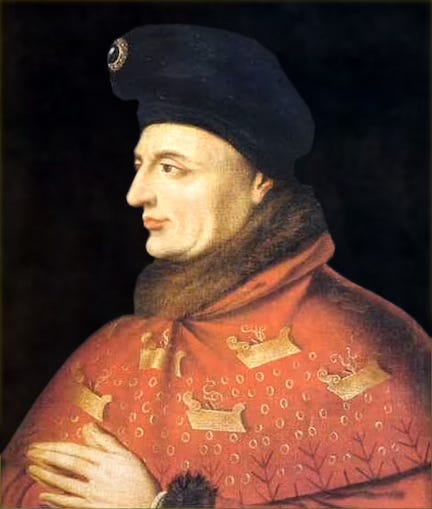
All good men to rally around Duke John the Fearless!
Lift your strong arms in protection of the Lord of Smoothness!
Let it not be said that when danger ... gluurgh *splutter* gasp
[drowns in own blood, clutching fancy handplane]